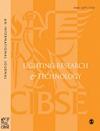Opinion: How do we define ‘healthy’ lighting?
IF 2.2
3区 工程技术
Q2 CONSTRUCTION & BUILDING TECHNOLOGY
引用次数: 0
Abstract
Increased awareness about how the light to which we are exposed throughout the day influences our health, performance and well-being has sparked interest in practical solutions to optimise lighting design and practice to promote and maintain human health. What has been lacking until now, however, is an agreed definition as to what an appropriate daily pattern of light exposure should entail to inform these goals. It has long been known that light is a key regulator of our internal circadian clock, hormone levels, sleep and other aspects of physiology and cognitive function (so-called non-visual responses to light). These adaptations evolved to allow us to tune cycles of rest, activity, energy intake and associated body functions to the availability of natural light. However, our patterns of light exposure are now increasingly at odds with the natural solar cycle. Hence our dimmer days (due to reduced exposure to daylight) and brighter nights (due to ready access to electric light sources) can disrupt the normal functioning of these biological control mechanisms and contribute to acute and longer-term impacts on health and performance. The obvious solution is to make days brighter and evenings/nights dimmer, but how bright or dim? This has proved a particularly challenging problem because it does not just require agreeing a set of numbers but also identifying an appropriate way of measuring ‘brightness’ in the context of the light-sensing machinery that regulates such responses. Significant progress here became possible due to a new international standard for metrology (CIE S 026/E:2018) based around the properties of intrinsically photosensitive retinal ganglion cells (ipRGCs) known to mediate non-visual responses. The ipRGCs possess their own photopigment, melanopsin, which is maximally sensitive in a part of the spectrum (~490 nm in vivo) distinct from the cone photoreceptors whose properties underlie established photometric units. Since ipRGCs can also convey signals from rods and cones, however, there has been uncertainty as to the relative contribution of melanopsin versus these other signals. Accordingly, the new standard has formalised approaches for quantifying light separately for each of the photoreceptors that may contribute to ipRGC responses, and thereby has facilitated numerous retrospective evaluations of historical data and informed new hypothesis-driven investigations designed to address the existing uncertainty. These advances have now enabled the first expert scientific consensus, quantitative, recommendations for daytime, evening and night-time light exposure to best support physiology, sleep and wakefulness.1 The recommendations derive from an international group of leading specialists in the non-visual effects of light and associated metrology, informed by detailed evaluation of laboratory data and corroborating field studies which reveal melanopsin-weighted light exposure provides a reliable model of the sensitivity of practically relevant non-visual responses to light in healthy adults. These recommendations now provide a clear framework to inform how we light indoor spaces spanning homes, workplaces, educational and healthcare establishments, expressed in an easily measured, SI-compliant, quantity: melanopic equivalent daylight illuminance.观点:我们如何定义“健康”照明?
人们越来越意识到,我们全天接触的光线如何影响我们的健康、表现和福祉,这激发了人们对优化照明设计和实践的实用解决方案的兴趣,以促进和维护人类健康。然而,迄今为止缺乏的是一个商定的定义,即为了实现这些目标,适当的每日光照模式应该包括什么。人们早就知道,光是我们体内生物钟、激素水平、睡眠和其他生理和认知功能(所谓的对光的非视觉反应)的关键调节器。这些适应性的进化使我们能够根据自然光的可用性调整休息、活动、能量摄入和相关身体功能的周期。然而,我们的光照模式现在与自然的太阳周期越来越不一致。因此,我们较暗的白天(由于日光照射减少)和较亮的夜晚(由于随时可以获得电光源)可以破坏这些生物控制机制的正常功能,并对健康和表现造成急性和长期影响。显而易见的解决办法是让白天更亮,晚上/夜晚更暗,但是多亮或多暗呢?事实证明,这是一个特别具有挑战性的问题,因为它不仅需要商定一组数字,还需要在调节这种反应的光感机制的背景下确定一种测量“亮度”的适当方法。由于一项新的国际计量标准(CIE S 026/E:2018)基于已知介导非视觉反应的内在光敏视网膜神经节细胞(iprgc)的特性,这方面的重大进展成为可能。iprgc具有自己的光色素黑视素,它在光谱的一部分(体内约490 nm)最敏感,不同于锥状光感受器,锥状光感受器的性质是建立光度单位的基础。然而,由于iprgc也可以传递杆状细胞和视锥细胞的信号,因此黑视素与这些其他信号的相对贡献一直不确定。因此,新标准对可能导致ipRGC反应的每个光感受器分别量化光的方法进行了形式化,从而促进了对历史数据的大量回顾性评估,并为旨在解决现有不确定性的新假设驱动调查提供了信息。现在,这些进步使专家们首次达成科学共识,定量建议白天、晚上和夜间的光照,以最好地支持生理、睡眠和清醒这些建议来自于光的非视觉效应和相关计量学领域的国际领先专家小组,通过对实验室数据的详细评估和确凿的实地研究得出,这些研究表明,黑视素加权光暴露提供了健康成人对光的实际相关非视觉反应敏感性的可靠模型。这些建议现在提供了一个明确的框架,告知我们如何照亮室内空间,包括家庭、工作场所、教育和医疗机构,以易于测量的、符合si标准的数量表示:暗视等效日光照度。
本文章由计算机程序翻译,如有差异,请以英文原文为准。
求助全文
约1分钟内获得全文
求助全文
来源期刊

Lighting Research & Technology
工程技术-光学
CiteScore
5.40
自引率
16.00%
发文量
69
审稿时长
>12 weeks
期刊介绍:
Lighting Research & Technology (LR&T) publishes original peer-reviewed research on all aspects of light and lighting and is published in association with The Society of Light and Lighting. LR&T covers the human response to light, the science of light generation, light control and measurement plus lighting design for both interior and exterior environments, as well as daylighting, energy efficiency and sustainability
 求助内容:
求助内容: 应助结果提醒方式:
应助结果提醒方式:


